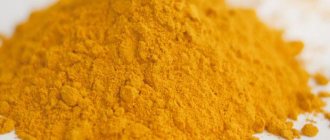Our body can perhaps be considered the most “advanced technology” that Mother Nature has created. In it, each organ is unique in its “design”, and with its capabilities it is not so surprising as it is amazing. And if you delve into the study of the whole organism, you can come across a considerable number of complex terms. Often in the tests you take, you can find such an unpronounceable phrase as increased aspartate aminotransferase. Meanwhile, this relates to the topic of amino acid breakdown. It’s worth getting to know this term a little closer.
What is the term?
This word means a special enzyme that is involved in the breakdown of almost any amino acid in our body. It is abbreviated as AST or denoted by capital letters AST. The enzyme is found in the tissues of many organs, such as:
- liver;
- heart;
- nerve tissue;
- kidneys;
- muscles;
- pancreas;
- spleen;
- lungs;
- brain tissue.
Moreover, most of the enzyme is found in the tissues of the heart, kidneys, nerve cells, and liver.
Thus, diagnosing any disease associated with these organs implies the fact that aspartate aminotransferase is elevated. In the lungs, spleen and pancreas, the amount of enzyme is not so large. At the same time, the male body differs from the female body in its high AST activity.
What other tests help to more accurately determine the cause?
AST and ALT are considered two of the most important tests for detecting liver damage, although ALT is more liver specific than AST and is prescribed more often. Sometimes the value of aspartate aminotransferase is compared directly with the value of alanine aminotransferase and their ratio is calculated - AST / ALT. This indicator can be used to identify different causes of liver damage and to distinguish liver damage from heart or muscle damage. In normal conditions, this number is greater than one (AST is normally slightly higher than ALT).
Also, AST levels are often compared with the results of other tests, such as alkaline phosphatase (ALP), total protein, and bilirubin, to determine what form of liver disease is present.
Functional purpose of ASAT
An enzyme is a protein molecule that is produced by the cellular tissues of internal organs. Its structure was established by Russian scientists back in the 70s. The function of the enzyme is to accelerate biochemical reactions occurring in cells. With the participation of vitamin B6, the exchange of amino acids becomes possible. During the complex transformation of many amino acids, including aspartic acid, a new compound is formed. It is thanks to it that the synthesis of glucose, which is so necessary for our body, is carried out.
Features of AST
Each of us sooner or later came across such a phrase as increased aspartate aminotransferase. Not everyone knows what this means. In this regard, let us lift the veil. In a healthy body, the enzyme is contained in the cells of the mentioned internal organs, which is the norm. Only a small portion of AST can enter the blood. For your information, the concentration of the enzyme in the heart exceeds its amount in the bloodstream by 10 thousand times.
But if the tissue of any organ is damaged, then aspartate aminotransferase, released, enters the blood and the amount of the enzyme begins to increase. The rate of growth depends on the degree of tissue damage. For example, if a myocardial infarction is diagnosed, the AST concentration will reach a maximum within 24 hours.
In some cases, the enzyme level can exceed the norm by 5 times, and this level can last for 7 days. And here someone may wonder: if aspartate aminotransferase (AST) is elevated, what does this mean? Such high activity is a characteristic sign of the patient’s serious condition, which often ends in an unfavorable outcome.
If the increase in enzyme concentration occurs at a gradual and increasing pace, this means that the infarction area is increasing. Aspartate aminotransferase activity can be triggered by the death of liver tissue.
In what situations is aspartate aminotransferase prescribed?
An aspartate aminotransferase test may be ordered as part of a comprehensive metabolic panel during a routine medical examination.
AST levels may also be measured along with several other blood substances when a person has signs and symptoms of liver disease, such as:
- weakness, fatigue;
- loss of appetite;
- nausea, vomiting;
- bloating and/or pain;
- jaundice;
- dark urine, light stool;
- itching;
- swelling in the legs and ankles;
- easy bruising.
ACT is given alone or along with other tests for people at increased risk of liver disease because in many cases there will be no signs or symptoms of mild liver damage. This includes people who:
- may have been infected with hepatitis viruses;
- drink heavily;
- have a family history of liver disease;
- take drugs that can damage the liver;
- overweight and/or having diabetes.
When aspartate aminotransferase levels are used to monitor treatment for people with liver disease, they can be determined on a regular basis to determine the effectiveness of therapy.
What can be the risk of high AST activity?
Often, a high concentration of aspartate aminotransferase in the bloodstream is caused by myocardial infarction. In this case, the amount of enzyme can be 10 times more than normal, and the higher it is, the larger the area of damage to the heart muscle. On the fourth day of treatment, a repeat test is usually prescribed. Its result will show whether aspartate aminotransferase is elevated or not. In the case of effective therapy, its concentration should decrease.
A high level of AST can also be observed with liver damage due to the influence of certain factors:
- Oncological diseases.
- Alcohol poisoning.
- Obesity.
- Presence of hepatitis.
Only in this case, in order to make an accurate diagnosis, it is necessary to conduct an additional examination. But elevated levels of the enzyme can also occur in completely healthy people. So, the activity can be:
- In children with inflammation.
- In women during the first trimester of pregnancy.
- With excessive consumption of alcoholic beverages.
- When taking certain medications: valerian, various antibiotics or paracetamol.
Heavy physical activity also has a negative effect in this regard. In addition, if aspartate aminotransferase is elevated, the reasons may be hidden in the use of drugs based on barbituric acid; taking contraceptives can also lead to an increase in AST.
What may affect the results
An increase in AST levels can be observed even in healthy people if the rules for preparing for the analysis are not followed. For example, blood should not be donated if during the day the patient experienced severe emotional distress, heavy physical exertion, underwent fluorography, X-ray examination or any physiotherapeutic procedures, ultrasound or rectal examinations of any spectrum. The result can be affected by the intake of alcohol and a number of medications, in particular, antitumor and choleretic drugs, antibiotics, barbiturates, contraceptives, sedatives, vitamin A and others, as well as recent heart surgery.
Reasons for increased AST
The reasons for the increased level of the enzyme, as mentioned above, can be myocardial infarction. With this diagnosis, high aspartate aminotransferase activity is recorded in 95-98% of all patients. In this case, the value can reach 3000 units/l. In other cases, high levels of the enzyme are observed with liver necrosis. This disease, in turn, can be caused by hepatitis of various forms. The AST level exceeds normal values by 10-100 times.
Among other diseases, it is worth noting angina pectoris, acute pancreatitis, obstruction of the bile ducts, cancer cells or liver metastases. The concentration of the enzyme can also increase due to injury, burns, the beginning of the process of muscle cell death, or under the influence of heat stroke. This can also include the patient’s condition in the postoperative period.
The fact that aspartate aminotransferase is elevated in a child may indicate the presence of hepatitis, muscular dystrophy, acute myocarditis, and jaundice.
What do increased indicators mean?
A significant increase in AST activity is observed in myocardial infarction, insufficient blood circulation, shock, hypoxia, acute viral or toxic hepatitis, necrosis or damage to liver cells.
A moderate increase in AST activity can be detected in liver cirrhosis, obstructive jaundice, metastases, acute pancreatitis, ischemic or hemorrhagic stroke, with damage to skeletal muscles, after injuries or surgical interventions. In children, protein activity may increase in the presence of inflammatory processes in the body. An increase in aspartate aminotransferase concentrations is sometimes observed during pregnancy.
The use of hepatotoxic drugs or drugs that cause cholestasis (slowdown or complete cessation of bile secretion) can also provoke an increase in AST. Usually this condition is regarded as temporary.
Indications for the purpose of analysis
An analysis to determine the level of the AST enzyme must be carried out in order to identify the presence of some serious pathologies:
- whether oncological processes occur in liver cells;
- are there metastases;
- elevated blood aspartate aminotransferase may indicate the presence of infectious mononucleosis or viral damage to the lymphatic system;
- autoimmune diseases (for example, Duchenne-Becker muscular dystrophy);
- myocardial infarction;
- cirrhosis;
- the analysis will also show the presence of hepatitis of any form, including liver necrosis.
In addition, the identified abnormalities in the muscles and liver should, at a minimum, make you think about getting tested.
Only the result obtained can confirm or refute the diagnosis. This will allow you to take the necessary measures in a timely manner. If no major changes have occurred, then this is only for the better.
Why is an aspartate aminotransferase test prescribed?
Although an elevated level of aspartate aminotransferase (AST) may indicate damage to more than just the liver, a blood test for aspartate aminotransferase (AST) is usually used to detect liver damage. It is often ordered along with a test for another liver enzyme called alanine aminotransferase (ALT) or as part of a liver panel or comprehensive metabolic panel (CMP) to screen and/or diagnose liver disease.
AST is also often measured to monitor treatment for people with liver disease and may be given either alone or with other tests for this purpose.
Sometimes aspartate aminotransferase levels can be used to monitor people who are taking medications that are potentially toxic to the liver. If AST levels increase, the person may be switched to another medication.
Preparation is important
As with some examinations, the test must be taken seriously, since taking medications, be it a medication prescribed by a doctor or a herbal decoction, can negatively affect the test results, which will be inaccurate.
Therefore, in order to know for sure whether aspartate aminotransferase is elevated or not, it is necessary to stop taking the medication. If for some reason this cannot be done, you should notify the attending physician, who must be provided with all the information regarding the drug. Namely, the dosage and time of taking it. For women, laboratory tests can ruin their pregnancy.
Carrying out analysis and norm indicators
The material for the study is exclusively venous blood or serum. It is taken on an empty stomach in the morning. The whole procedure does not take much time and is painless. The result will be ready after 6-10 hours. The serum can be stored for 48 hours at a temperature of 15-25 degrees. In cooler conditions (2-8°C) it will keep for about 6 days.
As for the question of where you can take such an analysis, you should contact specialized laboratories that conduct biochemical tests. In some cases, to find out whether AST (aspartate aminotransferase) is elevated or normal, you can undergo a test at the clinic at your place of registration or any government medical institution. You just need to first find out whether her laboratory has the necessary equipment and tools for such an analysis.
Normal indicators are different for each group of people. For example, in newborns the AST concentration is 25-75 U/l, while in slightly older children (1-18 years old) it is 15-60 U/l. Normal values for women range from 10 to 36 U/l, and for men – from 14 to 20 U/l.
Normal indicators
Units of measurement: U/l.
Reference values:
| Age, gender | ASAT, U/l | |
| < 5 days | < 97 | |
| 5 days - 6 months | < 77 | |
| 6 – 12 months | < 82 | |
| 1 – 3 years | < 48 | |
| 3 years - 6 years | < 36 | |
| 6 – 12 years | < 47 | |
| Women | 12 - 17 years old | < 25 |
| > 17 years old | < 31 | |
| Men | 12 - 17 years old | < 29 |
| > 17 years old | ||











